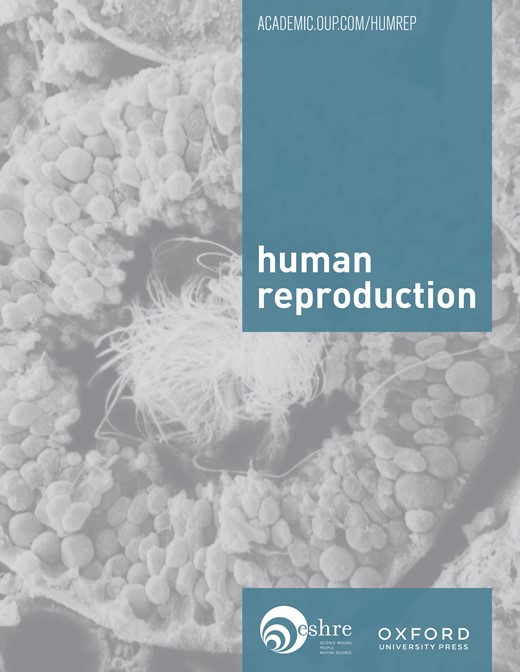-
Views
-
Cite
Cite
A. Delvigne, A. Demoulin, J. Smitz, J. Donnez, P. Koninckx, M. Dhont, Y. Englert, L. Delbeke, L. Darcis, S. Gordts, P. Puttemans, J. Gerris, R. Schoysman, F. Leroy, Endocrinology: The ovarian hyperstimulation syndrome in in-vitro fertilization: a Belgian multicentric study. I. Clinical and biological features, Human Reproduction, Volume 8, Issue 9, 1 September 1993, Pages 1353–1360, https://doi.org/10.1093/oxfordjournals.humrep.a138260
Close - Share Icon Share
Abstract
The multicentric study regroups 128 cases of the ovarian hyperstimulation syndrome (OHSS) in in-vitro fertilization (IVF) and 256 selected controls. Values of serum oestradiol obtained from different laboratories were found to be normally distributed after logarithmic transformation. Comparative study of clinical and biological characteristics indicates that among OHSS patients (i) mean age was lower; (ii) tubal indications for IVF were less frequent; (iii) polycystic ovary-like conditions (i.e. hyperandrogenism, anovulation, luteinizing hormone/follicle stimulating hormone ratio > 2) were more frequent. OHSS patients displayed ovarian hyper-sensitivity reflected by higher oestradiol peak concentrations in response to lower dosage of human menopausal gonadotrophin and by a steeper slope of oestradiol increment during stimulation. In these patients, the collection of greater numbers of fertilizable oocytes allowed replacement of more embryos with a good vitality score. Ongoing pregnancy rate was found to be higher among the OHSS patients. The following complications were recorded among OHSS cases: abdominal fluid at echographic examination or clinical ascites (86.7 and 71.1%, respectively); pleural and pericardial effusion (21 and 3%, respectively); haemoconcentration (71.1%); electrolytic disorders (6.2%). Although significantly different between groups, clinical and biological parameters under study showed considerable overlap of their distributions in control and OHSS cases. Therefore, these data must be submitted to discriminant analysis in order to derive a formula predictive of the risk of OHSS.




